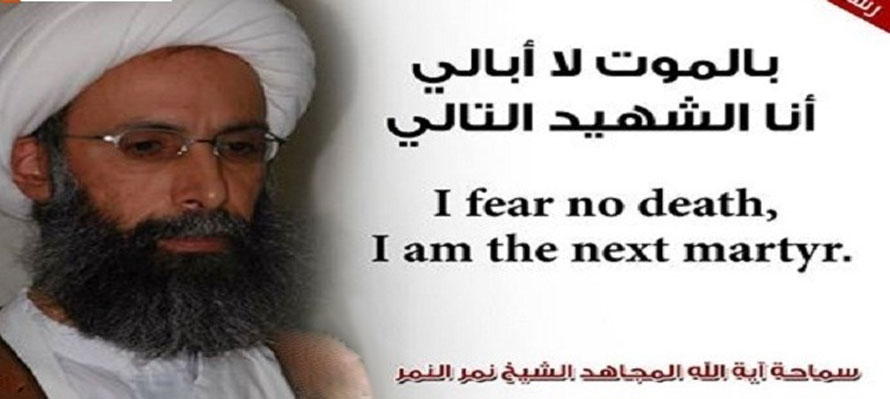it is a brief outline of the social and political activities of some Shiite clerics including the martyred Sheikh Baqir al-Nimr in Saudi Arabia whose execution was unjust and oppressive.

After the execution of martyred sheikh Nimr some Pro-Saudi pundits try to portray the martyred cleric as a pro-Iranian “radical” and “terrorist” calling him a leader of Hezbollah in Hejaz, who aimed to overthrow the monarchy. But it is clear that these sorts of efforts are being made by pro-Saudi pundits to legitimize Nimr’s unjustly execution, whereas, martyred Nimr was just a social justice warrior who fought against social discrimination in his country without having any sort of armed groups or military supplies. In addition, Martyred Nimr had far more in common with the revolutionaries of the Arab Spring which has been a sort of peaceful demonstration against oppressive regimes across the Middle East.
Historically talking it is not merely sheikh Nimr who demonstrated against discrimination and injustice, in Saudi Arabia, for the first time, rather it was his grandfather who had led a revolt in 1929 against Saudi tax collectors and Wahhabi missionaries who were sent to the Eastern Province after the founder of modern Saudi Arabia. [1]
There was an Arabic based movement in the Persian Gulf countries led by Iraqi clerics such as Muhammad Mahdi al-Shirazi whose supporters were mostly from Kuwait, Bahrain, and Saudi Arabia. Actually, Nimr became politicized in the late 1970s, when Saudi branch of the Shirazi movement organized a short-lived uprising in 1979, of which Awamiya was one of its centers. But, when the Shirazi movement fell out with the Iranian authorities in the mid-1980s, Nimr became a teacher in the movement’s hawza in the Damascus suburb of Sayyida Zeinab, which became the center of the Shirazi movement. [2]
After the falling-out with Iran, the Shirazis had hardly any presence in the city of Qom, the center of religious learning in Iran. Iraq under Saddam Hussein was also a no-go area for them. So Sayyida Zeinab became the place of choice for this transnational network, as well as a place that people from the Gulf States could easily visit. After more than a decade in exile, the Saudi Shiites of the Shirazi movement started to think about reaching an agreement with the Saudi government. By the early 1990s, a political settlement was on the table that included a general amnesty offered by King Fahd in return for the halt of their oppositional activities. [4]
But Nimr continued to voice demands that many Saudi Shiites supported, but no one else would dare say in public. In 2007, for example, he urged the Eastern Province’s governor in a meeting to give the Shiites a share of the oil income since they were living on top of the oil but not seeing very much of its benefits. [3] In 2009, after clashes between Shiite pilgrims and Saudi security forces in Medina, Nimr’s fiery sermons denounced the state’s anti-democratic and anti-Shiite foundations and called for protests in the Eastern Province.
Conclusively, the peaceful demonstration against oppression and discriminations in the Middle East especially in the Persian Gulf states goes back to the many decades ago which has been supported by the peoples of the countries. Now it must be noted that relating the social justice warriors' activities to Iran or any other country could not legitimize and justify the unjust execution of martyred sheikh. Protesting against oppressive regimes and supporting the justice warriors across the globe is a human value and duty that all free people in the world would support such movements and fighters.
Notes:
[1] See: http://foreignpolicy.com/2016/01/08/the-worlds-most-misunderstood-martyr/
[2] See: https://www.washingtonpost.com/blogs/monkey-cage/wp/2014/11/18/sectarian...
[3] See: https://www.hrw.org/reports/1992/WR92/MEW2-02.htm
[4] See: http://www.crisisgroup.org/~/media/Files/Middle%20East%20North%20Africa/...



